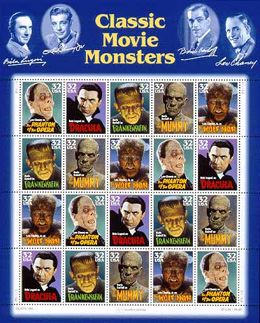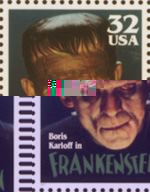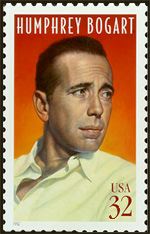| Mass Communication Media on Stamps Movies |
|
|---|---|

Those who first gave us motion picture technology had to solve technical problems such as how to focus and project an image. Lenses which could magnify the sun's rays were used as early as 600 BC. In the mid-1600s, a German priest projected an image by passing light through a transparency. In the mid-1800s shadow plays were projected. Inventors could project an image, but still couldn't capture an image until photography was invented. In 1839 Louis Daguerre, a Frenchmen, produced sharp images on copper plates coated with silver iodide, called daguerreotypes. By the 1880s chemistry and technology further improved. George Eastman developed a flexible celluloid roll film which made photography a popular hobby. Flexible film made motion pictures possible. |
|

Of course, motion pictures do not actually move. The viewer perceives an illusion of motion because the eye retains an image for a fraction of a second. This visual persistence was discovered in 1824. By 1895, French audiences could see brief motion pictures projected on a screen by August and Luis Lumiere. William Dickson, an assistant to Thomas Edison, perfected the motion picture camera and a projection system. Edison developed the kinetoscope – for 5 cents the viewer looked into a machine and turned a crank to see a short film. By 1900, the technology was ready for mass use. Early films were one-reelers which told a story and lasted 10-12 minutes. Examples: A Trip to the Moon in 1902 and The Great Train Robbery in 1903. Eventually, two-reelers came along. Their shows lasted 25 minutes. Nickelodeons were the first theatres. The first opened in Pittsburgh in 1905. Audiences paid 5 cents. Movies were silent so language wasn't a barrier for immigrants. In the early 1900s in New York City, more than 1 million a week went to theatres. By 1914, 40 million were going to the movies each week, including women and kids. Hollywood was established as the American film making center. |
|

By the mid-1920s, AT&T found a way to have reliable sound in movies. Warner Bros. produced the first talkie starring Al Jolson called The Jazz Singer. The 1930s and 1940s are described as the golden age of movies. In the late 1940s, TV came on the scene and provided direct competition for family entertainment. Box office receipts started dropping and are still declining. Television probably never will replace theatrical motion pictures because attending a motion picture is a social event. The primary function of movies is to entertain. By doing this successfully, they make a profit for their producers. The primary function of print media, such as newspapers and magazines, is to provide information. |
|
American Philatelic Society member SpaceToday.org.

| Navigating this Virtual Stamp Album | |
|---|---|
| | TOP OF THIS PAGE | | PRINTING | BOOKS | NEWSPAPERS | PAMPHLETS | MAGAZINES | | TELEGRAPH | WIRELESS | RADIO | TELEVISION | | MOVIES | RECORDINGS | THE WORLD WIDE WEB | | STAMP ALBUM FRONT PAGE | |  To the Webmaster's page |